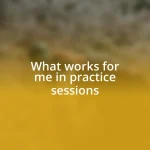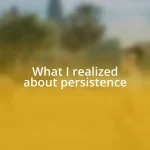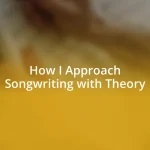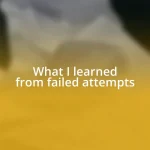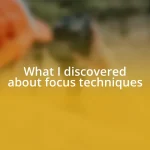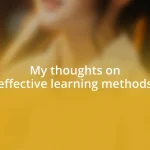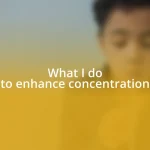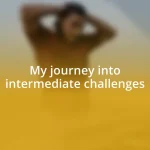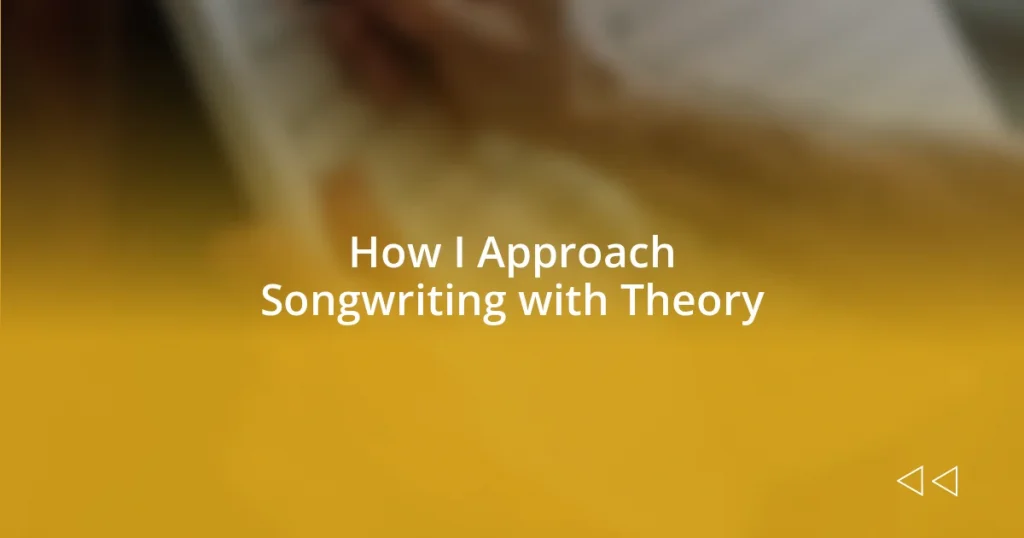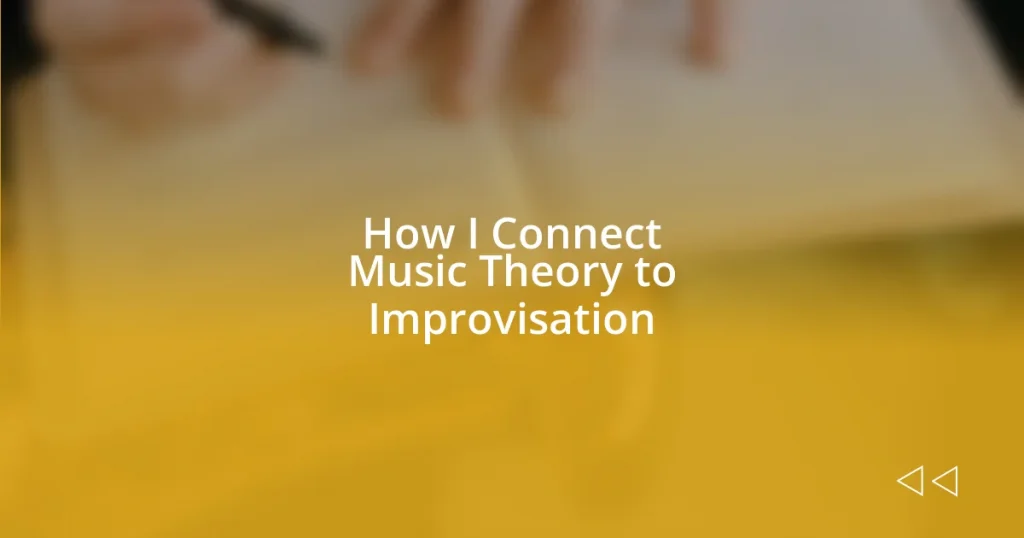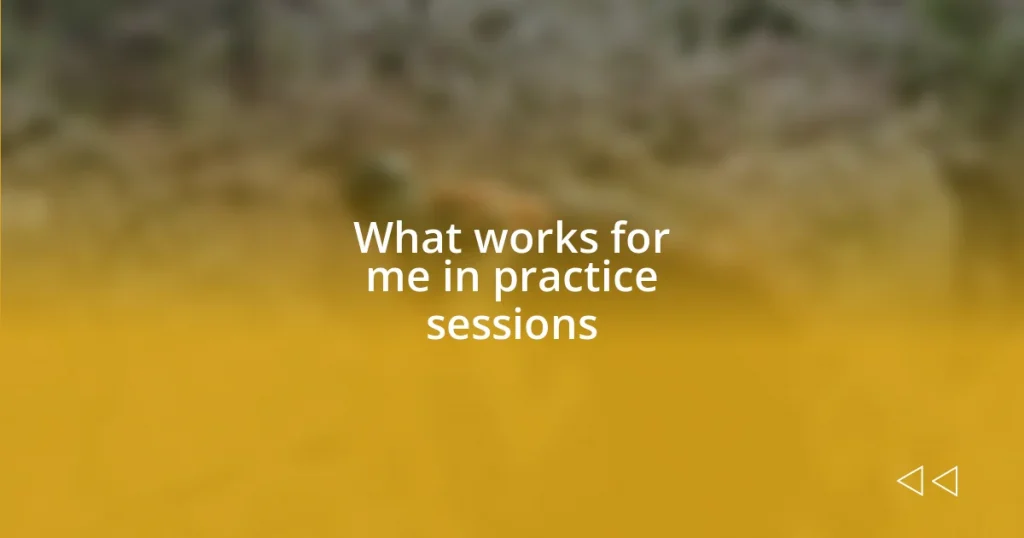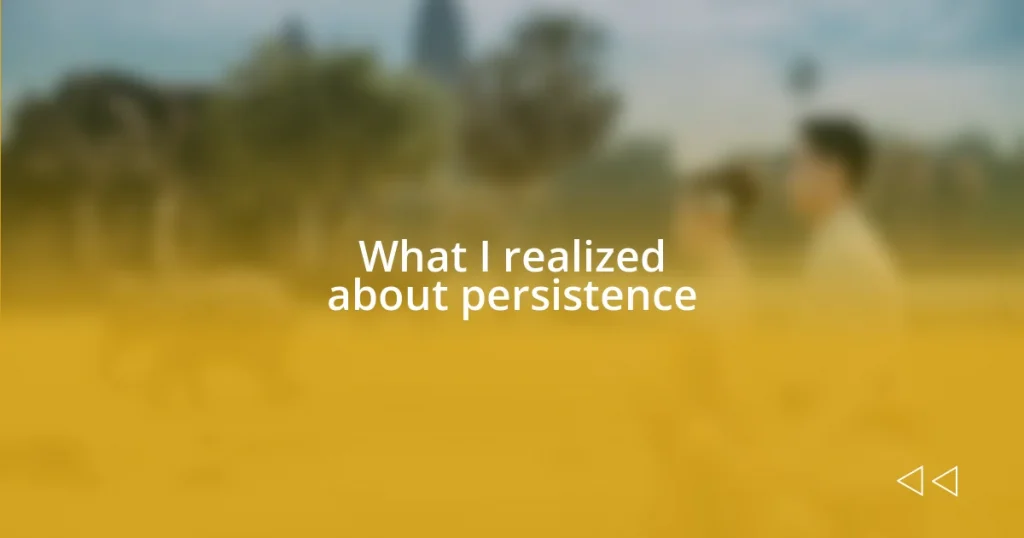Key takeaways:
- Understanding song structure, melody, harmony, and authentic lyrics are crucial in songwriting, allowing for emotional depth and personal connection with listeners.
- Music theory aids in creating varied melodies, informs chord choices, and encourages experimentation, enhancing both the songwriting process and collaboration with others.
- Combining melody and lyrics effectively through dynamics and rhythmic experimentation can transform a song’s emotional impact and storytelling ability.
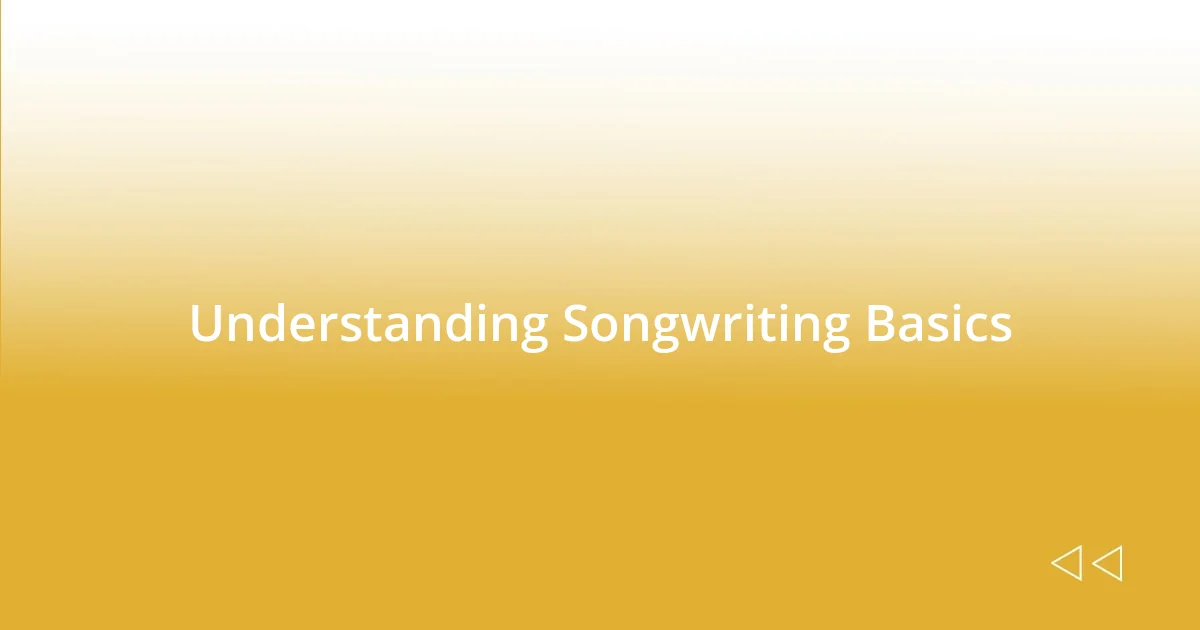
Understanding Songwriting Basics
When I first delved into songwriting, I realized the importance of structure. Songs generally follow a pattern—like verse, chorus, and bridge—but these components don’t have to be rigid. Have you ever noticed how a slight shift in structure can transform a song’s emotion or message? I remember reimagining a chorus from my early songs, and it felt like unlocking a door to a deeper layer of meaning.
I’ve found that melody and harmony play vital roles in conveying the song’s mood. For instance, minor chords often evoke sadness, while major chords bring happiness. There was a moment when I played a simple melody with both major and minor progressions; the shift in emotion from light to somber stunned me. How easy it is to evoke feelings through just a few notes!
Also, lyrics are where your personal story can truly shine. I can’t emphasize enough how vital it is to write authentically. When I weave personal experiences into my lyrics, it resonates so much more with listeners. Ever written something so honest that you felt exposed? That rawness can create a powerful connection with your audience, turning a simple song into something transformative.
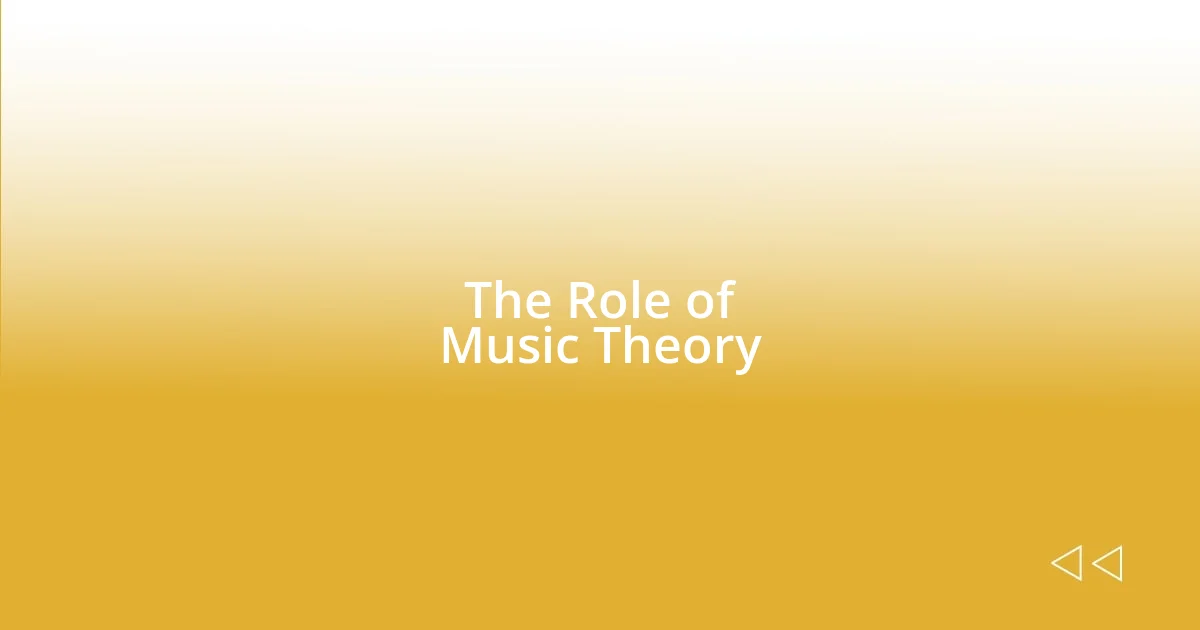
The Role of Music Theory
Music theory serves as a foundational tool that I often lean on during my songwriting process. Understanding the relationships between notes, scales, and chords allows me to paint with more complex emotional colors. I fondly recall a time when I utilized the concept of chord inversions. By rearranging the notes in a familiar chord, I unexpectedly found a more haunting progression that deeply resonated with my lyrics about loss, creating an atmosphere I hadn’t planned but was thrilled to discover.
- It helps in creating varied melodies: The rules of melody writing can prevent stagnation.
- It informs chord choices: Knowing which chords naturally fit together can enhance songwriting fluidity.
- It provides insight into musical form: Understanding forms like verse-chorus or AABA helps in structuring songs meaningfully.
- It enables experimentation: Comprehending most common progressions grants the freedom to break them for innovative sounds.
- It enhances communication: Both musicians and non-musicians can find common ground through musical terminology during collaboration.
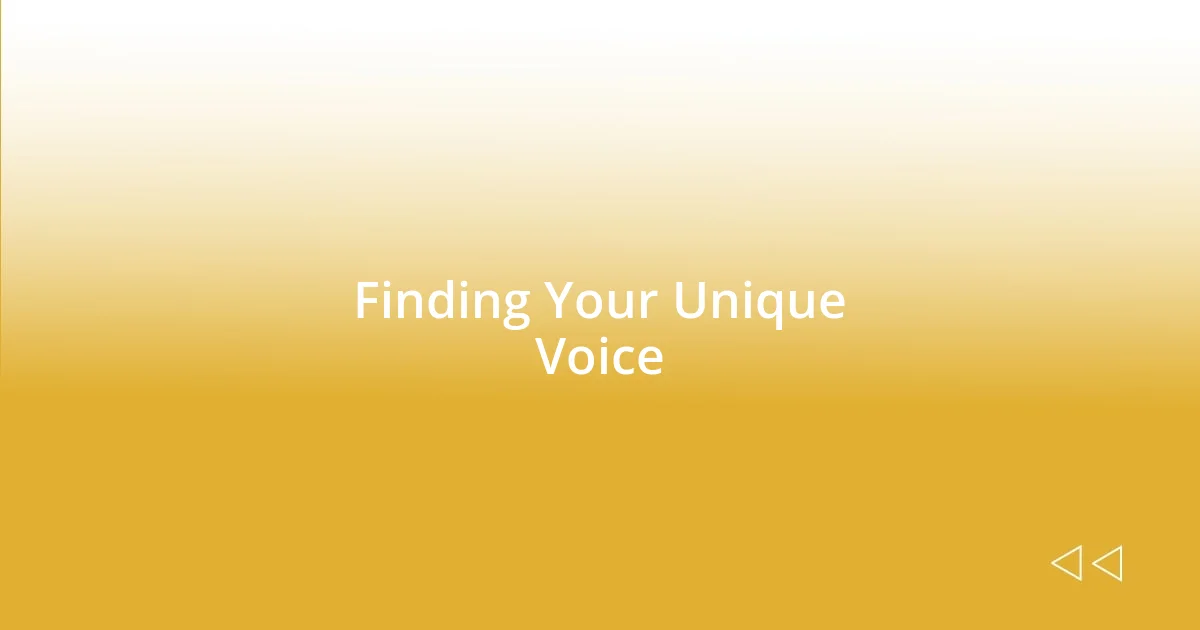
Finding Your Unique Voice
Finding your unique voice as a songwriter is a deeply personal journey. I remember sitting down with my guitar, strumming a few chords, and feeling an overwhelming urge to express my own stories. It was during these moments of genuine emotion that I discovered my sound, shaped by my experiences, my joys, and even my heartaches. Each note was a reflection of who I was at that moment. Have you found what moves you?
As I explored different genres, I began to notice how each style allowed for various expressions of my voice. One day, I tried to write a country song, but my pop sensibilities kept peeking through. This clash of styles felt awkward at first, yet it also revealed a new dimension of creativity in my songwriting. I realized that embracing contrasts can help uncover a distinctive sound. Are you open to experimenting with genres that feel foreign to you? That exploration could lead to your next great song.
Moreover, my voice evolved over time as I honed my craft. With every new song, I learned to weave in more of my personality and quirks. The freedom to infuse my unique perspective into my music became liberating. I recall a moment where I used an unexpected rhyme scheme just because it felt right to me, and that small choice left a lasting impact on my listeners. Finding that authenticity in your work can create a powerful emotional connection, don’t you think?
| Aspect | Finding Your Unique Voice |
|---|---|
| Personal Expression | Your experiences shape your sound. |
| Genre Exploration | Merging different styles uncovers creativity. |
| Evolution | Craft your voice with time and practice. |
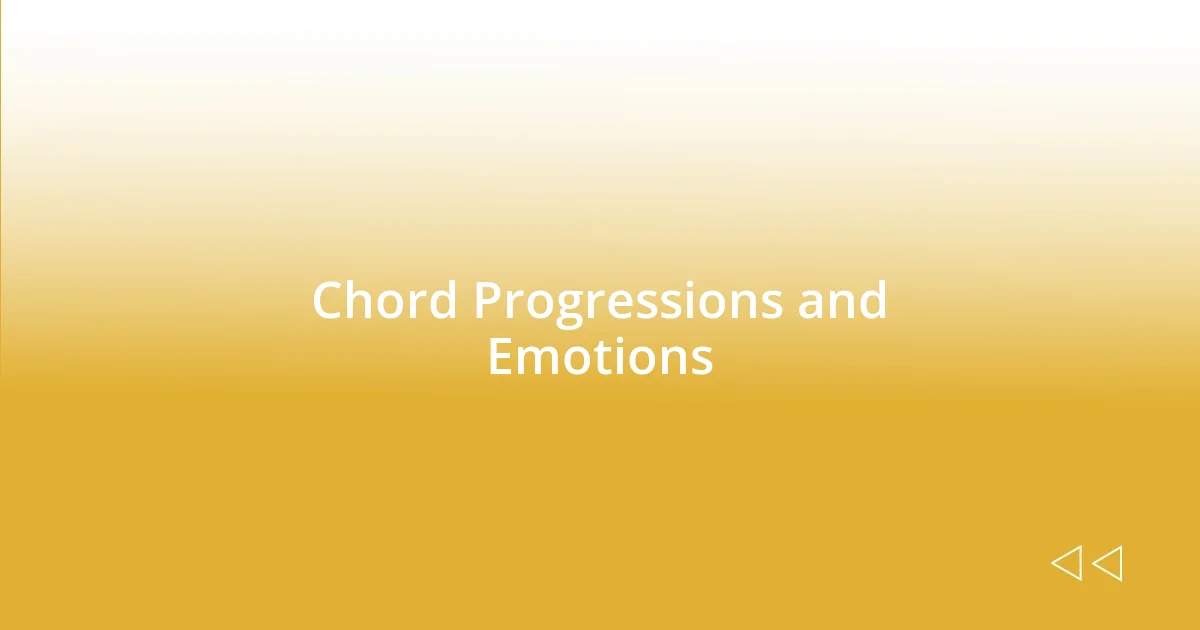
Chord Progressions and Emotions
Chord progressions have an incredible ability to evoke emotions that can transform a simple melody into something deeply moving. I often find myself drawn to the classic I-vi-IV-V progression because it perfectly captures a sense of longing and nostalgia. It’s fascinating how just a minor shift, like transitioning to a vii° chord, can elevate that feeling of tension before resolving back to the major. Have you ever noticed how a simple change in chord can shift the entire mood of your song?
The use of dissonance in my progressions often leads to unexpected emotional responses. For instance, I once experimented with a suspended chord in the middle of a song about hope and uncertainty. That moment of unresolved tension almost made listeners hold their breath until the resolution came crashing in, creating a cathartic release. Isn’t it captivating how music has the power to fluctuate between discomfort and relief?
I’ve realized that the key to connecting with listeners lies in understanding these emotional cues through chord choices. Lately, I’ve been gravitating toward minor progressions when I want to tap into a more somber landscape. There’s something about that combination of minor keys and subtle shifts, like using a minor 7th chord, that can evoke feelings of introspection. Have you ever tried pairing emotions with your chord progressions? It could lead to some really powerful songwriting moments.
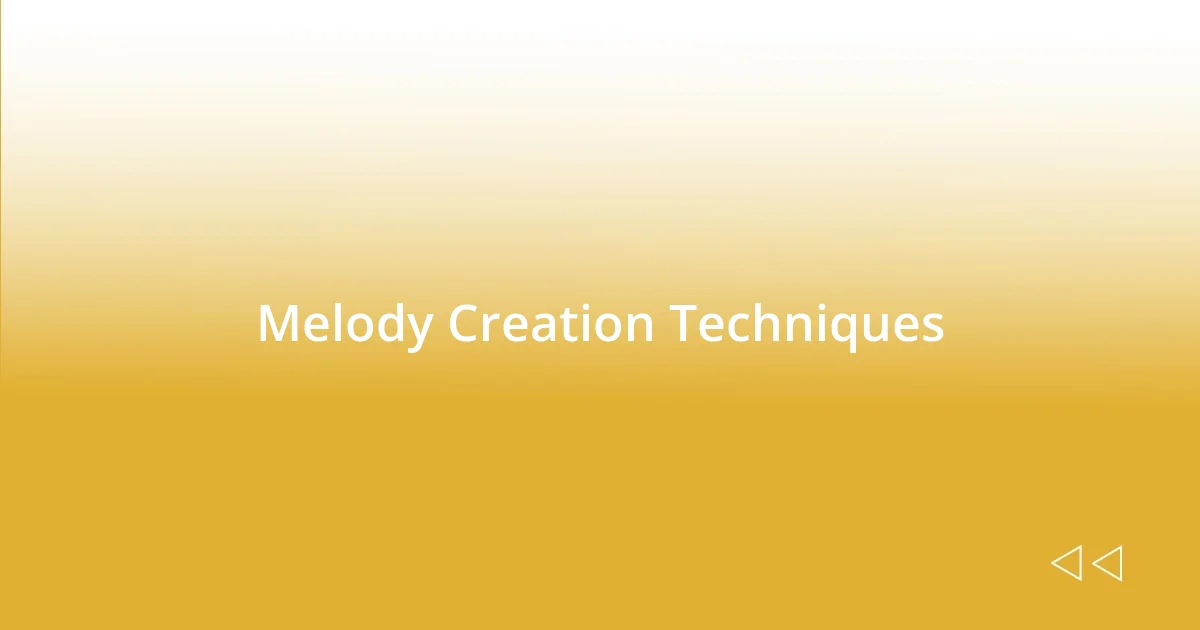
Melody Creation Techniques
Creating melodies is like painting with sound, where I often start by humming or singing whatever comes to mind. One technique I find effective is using call-and-response patterns, which can give a conversational flair to the melody. For instance, in one of my songs, I would sing a phrase, then pause, as if waiting for a response. This not only engaged my listeners but also made the melody feel interactive. Have you tried using this technique in your own songwriting?
Another method I love to explore is intervallic leaps. There’s something exhilarating about breaking the confines of predictable melodic lines. For example, I once incorporated a rising fifth while writing an upbeat track, and the surprise made it more memorable. This leap brought a spark of excitement that transformed the entire piece. Can you think of moments in your music where you could take a leap—both musically and creatively?
Though I sometimes return to familiar patterns, I challenge myself to include unexpected notes that tell a different story. When I penned a ballad, I dipped into the chromatic scale for a few measures, which added a bittersweet complexity to the melody. That choice made the emotional weight of the lyrics resonate even deeper. So, how might breaking from your usual melodic patterns lead to more impactful moments in your songs? Trust me, the results can be wonderfully surprising.
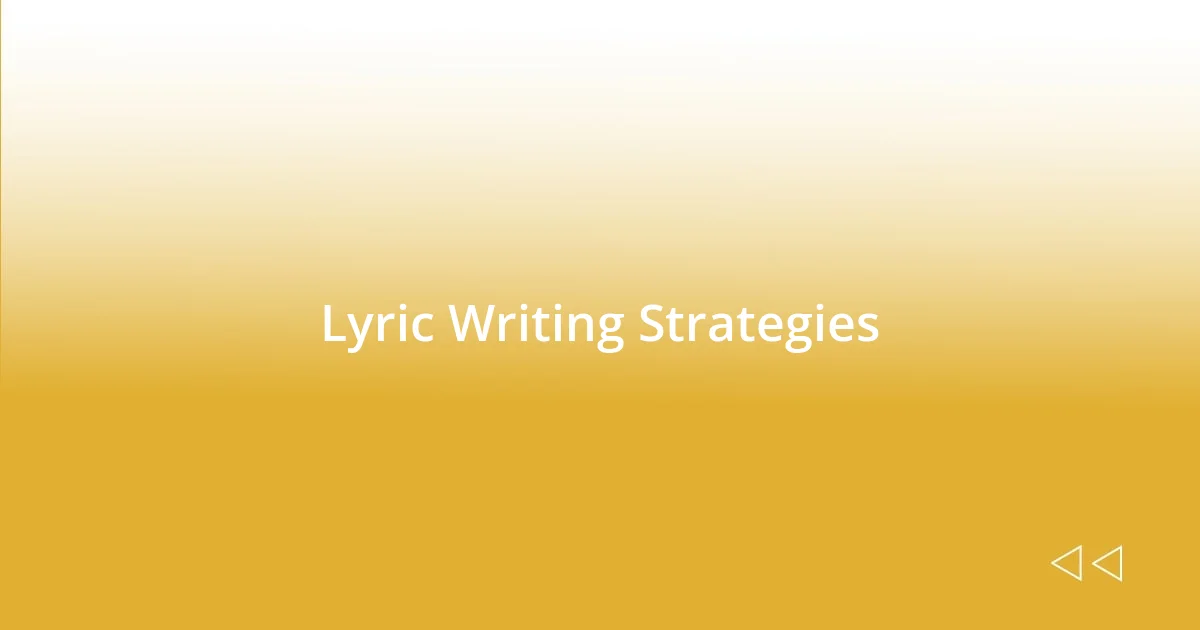
Lyric Writing Strategies
Writing lyrics is an intimate process for me, where every word carries the weight of emotion and connection. I usually start by jotting down phrases or ideas that resonate with me, allowing themes to bloom organically. For example, during a particularly reflective period, I found myself scribbling about the nuances of regret and hope, which eventually turned into a verse that felt profoundly relatable. Have you ever captured a fleeting thought and let it evolve into something bigger?
When it comes to structure, I often play with various forms like verse-chorus or AABA formats, as they help regulate the emotional flow of the narrative. I remember crafting a song that alternated between short, punchy verses and a lengthy, soaring chorus. This intentional contrast drew listeners in and intensified the resolution in the chorus. Have you explored different structures to highlight the emotional peaks in your lyrics?
Imagery is another cornerstone of my lyricwriting strategy. Using vivid depictions takes my listeners on a journey that goes beyond mere words. I once wrote a song that painted a scene of a stormy ocean to convey inner turmoil, immersing the audience in the tumultous landscape of feeling lost. Have you considered how your lyrical imagery can evoke powerful emotions in your songs? It’s all about creating that bridge between your experiences and the listeners’ hearts.
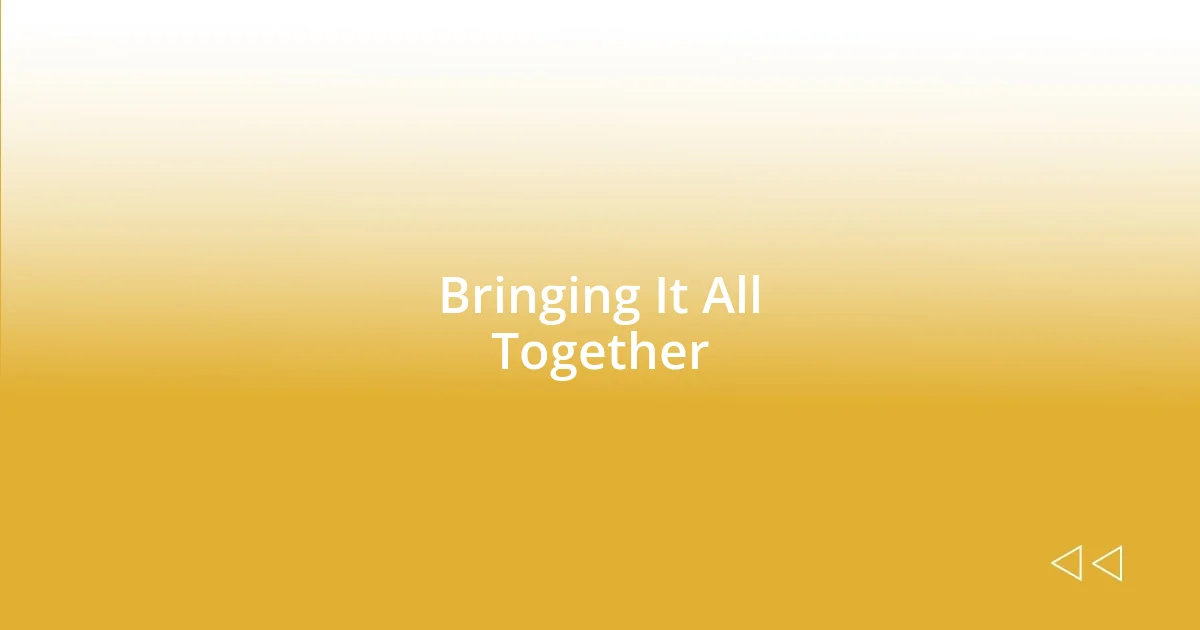
Bringing It All Together
Bringing together melody and lyrics is where the magic happens in songwriting. I often find it helpful to step back and listen to the melody without the lyrics, allowing me to feel the emotional core of the song. There was a time when I was working on a piece that just wouldn’t click until I turned the lyrics upside down—literally! I took a couple of lines that felt too heavy and sung them to a lighter, more upbeat melody. By reframing the song in this way, it became a celebration rather than a lament. Have you experienced that moment when a simple shift can change everything?
When crafting a song, I also pay attention to how dynamics—the rise and fall of music—can amplify the union of melody and lyrics. For instance, during a songwriting session, I noticed my vocals had more energy when I paired softer verses with a powerful chorus. This contrasting approach not only kept my audience engaged but also heightened the sense of urgency in my message. Think about your favorite songs; don’t they often utilize dynamics to make the lyrics hit harder?
As I weave both elements together, I often play with rhythmic patterns that can lend a unique voice to a lyric. There’s an unforgettable moment when I wrote a song about resilience, and I made the verses syncopated while the chorus flowed steadily. That little twist created a breathless excitement, allowing the listeners to feel the narrative’s struggle and triumph. Have you explored how varying rhythms can enhance your lyrical storytelling? I promise that experimenting with these combinations can lead to some truly rewarding discoveries.

